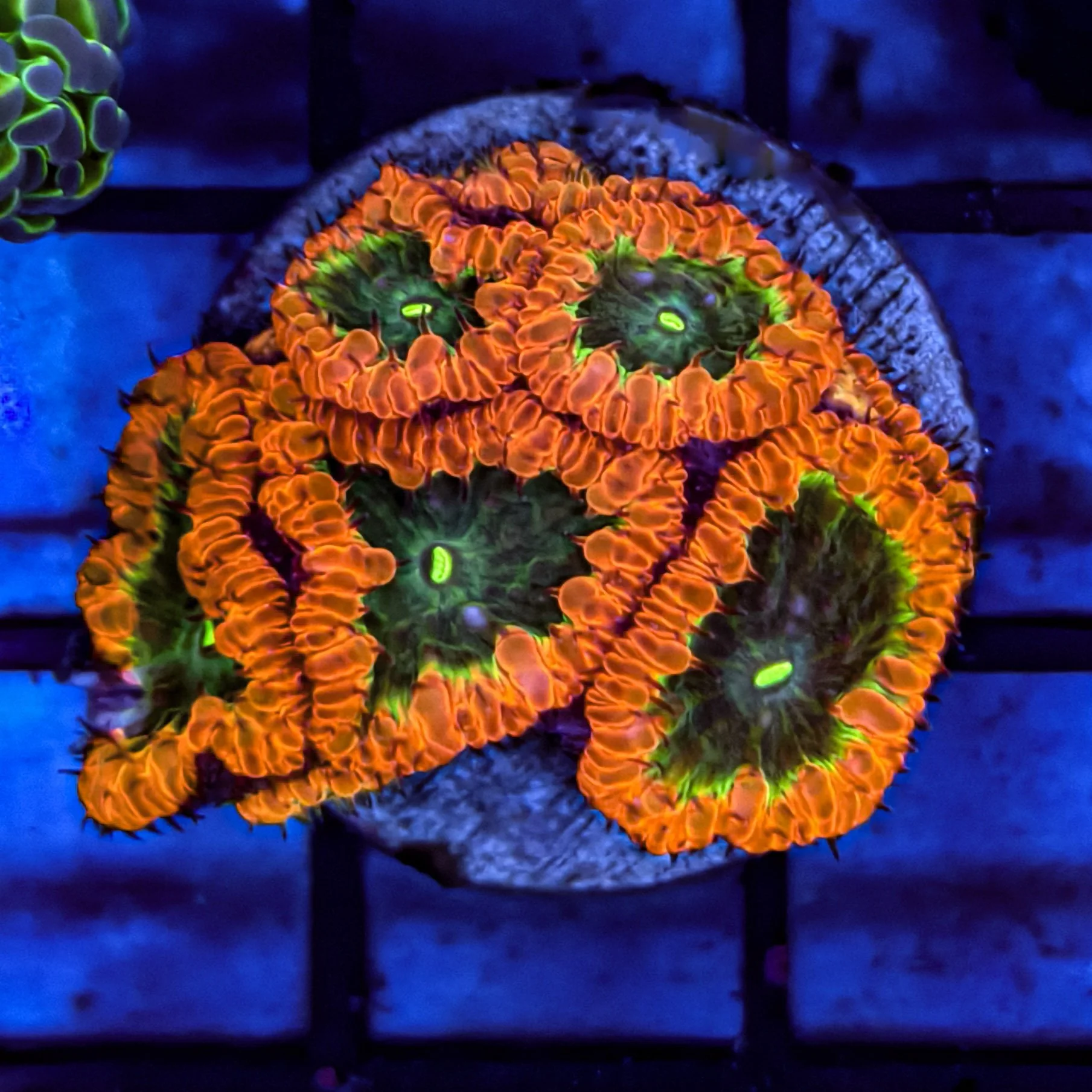 Image 1 of 2
Image 1 of 2

 Image 2 of 2
Image 2 of 2



C Capnella sp. - Kenya Tree Coral
C Capnella sp. - Kenya Tree Coral
The Kenya Tree Coral, scientifically known as Capnella sp., is a popular choice among aquarium enthusiasts due to its attractive appearance and relatively easy care requirements. This soft coral is characterized by its distinctive, branching structure that resembles a tree, with small polyps that extend from the branches, providing a vibrant display in a reef tank.
Habitat and Distribution
Kenya Tree Coral is native to the Indo-Pacific region, commonly found on shallow reefs. It thrives in areas with moderate water movement and access to ample light, making it well-suited for aquarium environments where these conditions can be replicated.
Care Requirements
To ensure the health and vitality of Kenya Tree Coral, consider the following care guidelines:
Lighting: Moderate to high lighting levels are ideal. Using LED or fluorescent lighting can encourage growth and enhance coloration.
Water Flow: Moderate water flow promotes the expansion of the coral’s polyps, allowing for optimal feeding and respiration. Avoid strong currents that could damage delicate structures.
Water Quality: Maintain stable water parameters with a salinity of 1.023-1.025, pH between 8.1-8.4, and temperature around 75-80°F. Regular water changes will help keep nutrient levels in check and prevent algae overgrowth.
Feeding: While Kenya Tree Coral can derive nutrients from the photosynthetic zooxanthellae living within its tissues, supplementing their diet with occasional feedings of zooplankton or specialized coral foods can promote growth and health.
Propagation
Kenya Tree Coral is known for its robust growth and ability to propagate easily. It can be propagated through a process known as fragmentation, where branches are gently cut and reattached to the substrate or rocks in the aquarium. These fragments will eventually settle and grow into new colonies.
Compatibility
Kenya Tree Coral is generally considered peaceful and compatible with a variety of tank mates. However, it can exhibit aggressive behavior towards other corals, so providing adequate spacing between corals is essential to prevent competition for space and resources.
Conclusion
C Capnella sp., or Kenya Tree Coral, is an excellent addition to both beginner and seasoned aquarists' tanks. With the right care and conditions, this stunning coral can flourish, adding beauty and diversity to a marine aquarium.
C Capnella sp. - Kenya Tree Coral
The Kenya Tree Coral, scientifically known as Capnella sp., is a popular choice among aquarium enthusiasts due to its attractive appearance and relatively easy care requirements. This soft coral is characterized by its distinctive, branching structure that resembles a tree, with small polyps that extend from the branches, providing a vibrant display in a reef tank.
Habitat and Distribution
Kenya Tree Coral is native to the Indo-Pacific region, commonly found on shallow reefs. It thrives in areas with moderate water movement and access to ample light, making it well-suited for aquarium environments where these conditions can be replicated.
Care Requirements
To ensure the health and vitality of Kenya Tree Coral, consider the following care guidelines:
Lighting: Moderate to high lighting levels are ideal. Using LED or fluorescent lighting can encourage growth and enhance coloration.
Water Flow: Moderate water flow promotes the expansion of the coral’s polyps, allowing for optimal feeding and respiration. Avoid strong currents that could damage delicate structures.
Water Quality: Maintain stable water parameters with a salinity of 1.023-1.025, pH between 8.1-8.4, and temperature around 75-80°F. Regular water changes will help keep nutrient levels in check and prevent algae overgrowth.
Feeding: While Kenya Tree Coral can derive nutrients from the photosynthetic zooxanthellae living within its tissues, supplementing their diet with occasional feedings of zooplankton or specialized coral foods can promote growth and health.
Propagation
Kenya Tree Coral is known for its robust growth and ability to propagate easily. It can be propagated through a process known as fragmentation, where branches are gently cut and reattached to the substrate or rocks in the aquarium. These fragments will eventually settle and grow into new colonies.
Compatibility
Kenya Tree Coral is generally considered peaceful and compatible with a variety of tank mates. However, it can exhibit aggressive behavior towards other corals, so providing adequate spacing between corals is essential to prevent competition for space and resources.
Conclusion
C Capnella sp., or Kenya Tree Coral, is an excellent addition to both beginner and seasoned aquarists' tanks. With the right care and conditions, this stunning coral can flourish, adding beauty and diversity to a marine aquarium.










